Point of Sale (POS) Development
Generate the most versatile point of sale system to boost revenue, streamline operations, and delight your customer with a great experience.













POS Customer Success Stories
Syncing Offline Orders via Mobikul POS System for US Wholesaler & Importer
Great Earth – An icon of the natural health industry in Australia
Giving Jamaican Customers a Convenient, Hassle-Free Online Shopping Experience
Why POS?
Point of Sale (POS) system helps retailers to manage their physical stores with ease. It lets retailers manage the product’s along with the inventory. POS holds all the tracks for customers and their respective orders with an eye on business loyalty programs, which in return results in a better shopper experience.
You can check the perks of having a Point of Sale System for a retail store below –
Traditional isolated POS
The technology changes at a faster pace and a cash register have already been turned into a digitalized system before a decade or two.
It all began with a traditional POS System in the beginning. A traditional POS machine is set up with its own physical server along with the heavy machinery. A traditional POS is truly hardware dependent and requires a huge setup for getting started.
It is meant for the largely scaled merchants and has better productivity and shopping handling experience, but it does have some limitations like –
- Not cost-friendly
- High maintenance charges
- No cross-channel integrations
- Bulky hardware
Cloud Omni-Channel POS
Cloud-based POS software is what we recommend to enterprises, as they are low on costs and high on accessibility. Cloud POS is built on top of native components of modern desktops and mobile devices which makes them an ideal choice for the omnichannel selling approach.
Cloud is everywhere and so is Cloud POS. A centralized system brings portability and empowers the “go and sell” methodology.
Types of POS: Web-Based & Native POS
There are two types of point of sale systems, web-based and native POS. A web-based POS runs on a web browser (as a URL) that connects to your server and automatically syncs information with your website.
While a native POS system works as a completely native application that is installed and runs on a device such as an Android tablet or Apple iPad. Being a native app, it provides deep integration with the device hardware resources and takes advantage of the platform.

Where to use POS?
For eCommerce businesses, the Point of Sale system will bring a boon to sales and revenue. Wherein, you are giving the opportunity to the customer to make the shopping from the online store as well as from the physical store.
POS systems are not just limited to eCommerce business, it can be used for many other types of businesses. From taking orders in a coffee shop, booking hotel rooms, selling event tickets, retail stores, or restaurants.
Point of Sale for any business will help to increase customer satisfaction and hence increase the growth of the business. It builds trust between the brand and its users.
Online Integrated POS
Webkul POS is tightly integrated into your existing system and you don’t require any separate software application or program installation. It is designed to work with any eCommerce/CMS platform where every information is synced automatically.

With this seamless integration, all the information is available across all the channels. So once you take an order on POS, it is immediately updated on the database.
So apart from checking orders from a POS device, you can log in to your website and check all the POS orders processed. Or log in to your mobile app and view or print sales receipt easily.
POS – Offline First Approach
Internet connection is needed to sync POS information to the server, but when you go offline the POS system continues to work. With offline mode, you still can place an order, add customers, print sales receipts, and record all the transactions. POS system automatically saves this data on its local storage and keeps your business running as usual.
Whenever the internet connection comes back online, POS reconnects to the server and syncs all the offline orders on its own. Webkul POS system supports offline merchants and retail stores that have poor network connectivity or don’t require 24×7 internet access.
POS Inventory Management
Inventory management is the most tricky part of any store. It should be managed in a proper way to keep track of every catalog.
Powerful inventory management using barcode allows you to track thousands of product SKUs and categories easily. You can assign products and categories to multiple POS outlets.
A good POS inventory management helps the businesses to keep track of the POS outlet items. Also, it helps to reorder inventory automatically. And transfer products between different stores.
Multichannel Inventory Management
Connect your store with multiple inventory sources to manage multi-channel inventories from a single website and easily track your product stock in a particular inventory.
The best part of multi-channel inventory management is that it allows you to focus on growing your business rather than only inventory management.
Manual update and synchronize inventory counts between the location across platforms is next to impossible. Multi-channel inventory management provides the real-time visibility and synchronization to the inventory of POS. The business owner needs a view of the inventory quantities as per the locations to fulfill orders across all channels.


Barcode Scanning Support
In Point of Sale, we have already discussed the importance of inventory management. Now, for managing inventory in an efficient way, barcode scanning support comes into the picture on POS.
Barcode scanning now helps to smartly search and add products to the Sales order using on Point of Sale. It POS agents to effortlessly scan the product and add it to the sales order accordingly.
A barcode scan is fast and reliable and takes a very less time than entering data manually. Using the barcode system a POS agent can quickly identify the products. And it takes a very less amount of time to complete the checkout process as compared to manual entry of products.
POS Outlet Inventory Control
When it comes to the POS, for retailers to know how much inventory they have is a must. It helps them to track the inventory and let them know how much they need.
As we know that, the traditional approaches of inventory management require the retail agents to manually review the level of stock on a day to day basis. This was a time consuming process that includes lots of effort, especially for large scale businesses.
So, executing this with a proper inventory management will reduce a lot of manual counting and paperwork. The POS allows you to mention quantity on hand for your outlets and automatically deducts from master stock when a sale is done.


Bulk Product Assignment using CSV file
As we know, if you are planning to introduce the Point of Sale system anywhere in your business, then product assignment to the POS outlets will be a pain. Because in general, there are numerous products available for the customer in any eCommerce business.
So here to make things easy, the mass product assignment comes into the play. With the help of it, the business owner can mass assign the products to the POS outlets. It reduces lots of manual effort and time too.
Distribution based on Products or Categories
There may be a case where the POS outlets will be based on the different catalogs or categories. In such cases, the distribution based on the products or categories comes into play. The products are assigned to the outlet either as per each product or as per the category associated with them.
Also, in other aspects, distribution makes a product available for purchase through the market. Every business has its individual need so that it can manage the catalog distribution.
This process is also dependent on the market research wherein the merchant will get to know the need of any particular catalog in any certain areas or for certain target customers.


Sync Inventory Across Multiple Outlets
Inventory Synchronization is a must-have a feature that any POS System can have. Also, not only for the online but for the offline POS too. It helps to maintain the synchronization in the inventory throughout all the channels.
The stock of goods will be synchronized in real-time with all the outlets. That refers to the fact if there’s a chance at one end it will be reflected on the others. It will help to maintain integrity among all the channels.
Also, in a way, it enhances the user experience and provides them with more transparency. Real-time synchronization eliminated a lot of extra efforts from the merchant end too.
Single View to Check all the Assigned Inventory
Now the admin from the backend can view the set of the complete inventory. It will contain all the useful information about the product for further assignment and inventory management.
Keeping a count of all the inventory and in-hand stock across physical stores is complex. Webkul POS allows you to mention the quantity on hand for your outlets and automatically deducts from master stock when a sale is done.


PIM Integration
Using PIM (product information management) tool you can sync your catalog data across multiple channels including the POS system. PIM integration enables you to keep consistent and standardized information for all the sales channels.
•Per channel content strategy
•Up-to-date product information
•Useful for managing bulk volumes
•Manage products with different data types and attributes
Multi Payment Terminal Services
Discover seamless transactions and enhanced customer experiences with our multi-terminal POS service.
With versatile support for various payment channels like Stripe and more.
Scalability for growing businesses, robust security features, and comprehensive reporting tools ensure efficiency and satisfaction.
Trust our support team to keep your operations running smoothly. Elevate your business today with our innovative POS solution.

POS Hardware Support
Webkul POS works on multiple forms of devices such as tablets, desktop PC, laptops, or any other hardware which is capable of running a web browser or installing a native app.
The list of POS peripherals supported by the POS system is flexible, you can connect your barcode scanner, receipt printer, cash drawer with your POS device easily.
Ready to Use – POS Products
We have been in creating eCommerce products for around a decade and understand the retail industry very well. Also, we have created ready-to-use products with plug and play approach.
We have built ready-to-use plugins for popular eCommerce platforms which give you a POS interface on the native web and can be accessed from portable devices.
Know more about the respective plugins at the Webkul Store.

Point of Sale System (POS) for Magento 2

Point of Sale System (POS) for Magento

Point of Sale System (POS) for OpenCart

Point of Sale System (POS) for Prestashop


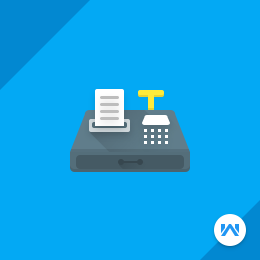
Point of Sale System (POS) for CS-Cart

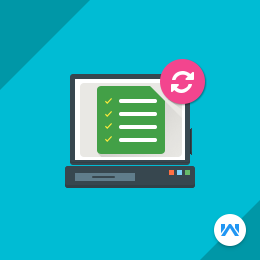
Point of Sale System (POS) for Odoo

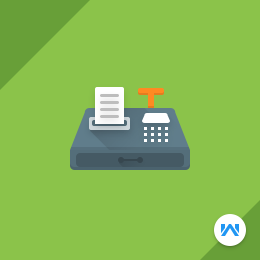
Point of Sale System (POS) for Laravel

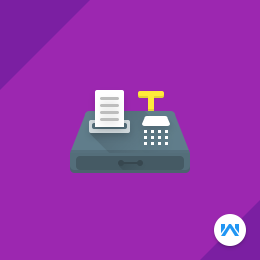
Point of Sale System (POS) for WooCommerce

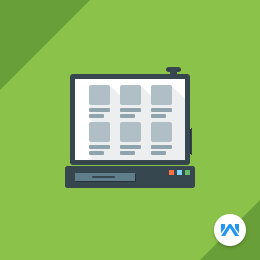
Point of Sale System (POS) for PimCore
We have also created an isolated standalone “Mobikul POS App Builder” which can create both Android and iOS native apps. It also has the ability to integrate with the popular eCommerce platform so that everything gets synced in runtime.
Testimonial
Works great! And customer service was quick and very friendly. They provided also the v10 which was not available at the time at no extra cost.


ERP Implementation Manager
Piensom GuatemalaFrequently Asked Questions
SaaS (Software as a Service) marketplace solution facilitates the license and subscription model. Under this system, store owners can build desired multi-vendor eCommerce websites by using cloud-based systems.
This actually means that the store owner can access the software any and anywhere using their personal device. One can easily convert their regular e-commerce store into a SaaS multi-vendor by using multiple Webkul modules.
The multi-tenant eCommerce platform permits the distributors and vendors to build their own branded online stores. There are multiple advantages of multi-tenant eCommerce platforms that are listed below:
– Feasible to Cost
– Easy Maintenance
– No extra cost for updates
– Can be upgraded without any effect on tenants
– New Tenants can onboard conveniently
– Resources are scalable
The first and foremost thing to be considered is the platform. There are four main sections available that are admin console, store owner dashboard, end customer storefront, and marketing website. One must choose the perfect platform for building the same. Then pick the right storefront technology like React, Angular, and Vue. A specific development and design team must be there for processing. Then storefront implementation will be done using the APIs.
The payment gateway is the system that is responsible to transmit the transactional data securely to merchant banks and further will receive the responses from issuing banks.
Basically, it informs the customer bank how much amount needs to be sent. The regularly used payment methods are Stripe, PayPal, and Amazon Pay.
In SaaS-based organizations, there are multiple payment gateways one can use to make payments for customers on a regular basis. Stripe is considered to be the best payment gateway for the same.
SaaS not only provides faster credibility but is also proven as a secure platform. For security purposes, organizations can use multiple types of SaaS solutions.
– Compliance Solutions
– Data Loss Prevention
– Malware Prevention
– Cloud Access Security Brokers











